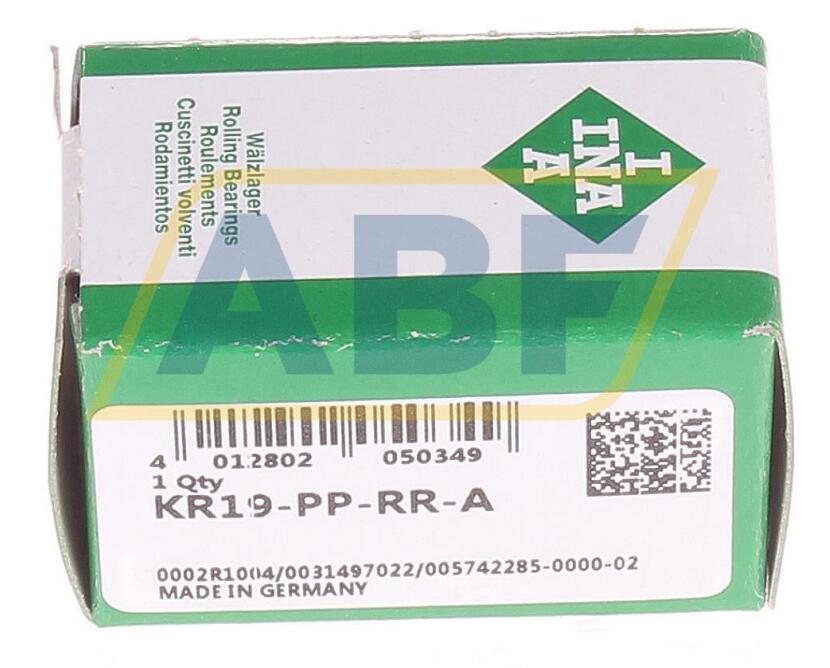Application Principles Of INA Rolling Bearings
The INA bearing configuration includes not only rolling bearings, but also components related to bearings, such as shafts and bearing housings. Lubricants are also a very important part of bearing configuration, because lubricants must be protected against wear and corrosion so that bearings can fully function. In addition, the seal is also a very important component, and the performance of the seal is critical to the cleaning of the lubricant. Keeping it clean has a profound impact on the service life of the bearings, which is why lubricants and seals have become part of the INA bearing business.
Bearing space and position of the machine
In mechanical design, generally determine the size of the shaft, and then select the rolling bearing according to the size of the shaft. Ball bearings are usually used for small shafts and roller bearings are used for large shafts. However, when the INA bearing is restricted in the diameter direction of the machine, needle roller bearings, special light and ultra-light series ball or roller bearings are used; when the axial position of the bearing is restricted in the machine, narrow or Very narrow series of ball or roller bearings.
The size, direction and nature of the load on the bearing
Load is the most important factor in choosing bearings. Roller bearings are used to bear heavy loads, ball bearings are used to bear light or medium loads, bearings made of carburized steel or bainite hardened can withstand shock and vibration loads. In the direction of the load, when bearing pure radial loads, deep groove ball bearings, cylindrical roller bearings or needle roller bearings can be selected. When bearing a small pure axial load, a thrust ball bearing can be used; when bearing a large pure axial load, a thrust roller bearing can be used. When INA bearings are subjected to combined radial and axial loads, angular contact ball bearings or tapered roller bearings are generally used. For cantilever support structures, tapered roller bearings or angular contact ball bearings are often used and are used in pairs.
Self-aligning performance of bearings
When the centerline of the shaft is different from the centerline of the bearing housing, there is an angle error, or the rigidity of the shaft is small due to the large distance between the two supports of the shaft, and it is easy to bend or tilt under force, you can choose a good adjustment Heart ball or spherical roller bearings, as well as outer ball bearings. This type of INA bearing can maintain normal operation when the shaft is slightly inclined or bent.
Bearing rigidity
The rigidity of the bearing refers to the amount of force required for the bearing to deform per unit. The elastic deformation of the rolling bearing is very small, which can be ignored in most machines, but in some machines, such as the machine tool spindle, the bearing rigidity is an important factor. Generally, cylindrical and tapered roller bearings should be used. Because these two types of bearings are under point load, their rolling elements and raceways are in point contact, and their rigidity is poor. In addition, various types of bearings can also be pre-tensioned to achieve the purpose of increasing the support rigidity. Such as angular contact ball bearings and tapered roller bearings, in order to prevent the vibration of the shaft and increase the support rigidity, a certain axial force is often applied in advance during installation to make them compact. It is specifically pointed out here: the preload must not be too large. If it is too large, it will increase the friction of the INA bearing and increase the temperature rise, which will affect the service life of the bearing.

Generally, the shaft is supported by two INA bearings in the radial and axial directions. The rolling bearing on one side is called a fixed-end bearing. It bears both radial and axial loads. The role of relative axial displacement. The other side is called the free end, which only bears radial load and can move relatively in the axial direction.
The fixed-end bearings must be fixed with both the shaft and the bearing box. The more suitable INA bearings are radial bearings that can withstand compound loads, such as deep groove ball bearings, spherical roller bearings and double-row or matched angular contact ball bearings or tapered Roller bearings. Radial bearing combinations that bear simple radial loads, such as cylindrical roller bearings without ribs on the inner and outer rings combined with deep groove ball bearings or four-point contact ball bearings or bidirectional thrust bearings, can also be used as fixed-end bearings. At this time, the second bearing provides bidirectional axial positioning, but it must be kept at a certain radial distance from the bearing box during installation. The free end bearing will not squeeze in the bearing when the length of the shaft changes due to thermal expansion. Axial displacement can occur inside the bearing, as well as bearing rings and bearing seats.
